 TiVo has signed a multiyear deal to make a version of its personal video recorder software available to customers of Comcast Cable, currently the King Kong of largest cable operators in the US.
TiVo has signed a multiyear deal to make a version of its personal video recorder software available to customers of Comcast Cable, currently the King Kong of largest cable operators in the US.
The deal is the first of the partnerships the struggling pioneer hopes to forge with cable operators and will result in Comcast and TiVo working together in peace and harmony to develop a version of the TiVo service to be made available on Comcast’s current DVR platform.
The new service will be marketed with the TiVo brand, and is expected to be slipping out on Comcast’s DVR products in a majority of Comcast markets in mid-to-late 2006.
This long-term, non-exclusive partnership will provide Comcast customers with the opportunity to choose the TiVo service with features like Season Pass and WishList, available as an additional option.
If all goes to plan, the service will showcase TiVo’s home networking, multimedia, and broadband capabilities.
“We are focused on providing our customers with a 21st Century television experience,” said Brian Roberts, the chairman and CEO of Comcast Corporation. “TiVo has revolutionized the way consumers watch and access home entertainment. By partnering with TiVo, we are continuing to deliver technology that enables our customers to watch what they want when they want on TV. This agreement also reflects our commitment to work with leading technology providers to offer customers more value and choice in their home entertainment experience. Customers love the ease and convenience of our current DVR service, and we look forward to working with TiVo to enhance that service and offer customers the best-in-class DVR experience.”
Steve Burke, the president of Comcast Cable and COO of Comcast, added, “The strong TiVo brand, the clear track record of customer loyalty it has and its cutting-edge features make this a terrific partnership and exciting new product for Comcast.”
Tom Rogers, the vice chairman of TiVo, noted, “It is very important that TiVo has found a way to work with the nation’s largest cable operator on a cooperative basis to develop a state-of-the-art TiVo service, fully integrated with a cable set-top box, that will make TiVo available to millions of cable viewers. … This is a real milestone for TiVo and for the cable industry, but most importantly it is a milestone for television viewers.”
Analysts are hailing the agreement as a lifeline for the Californian-based company, whose shares jumped 75 percent, or US$2.87 (e2.14/£1.50), to close at US$6.70 (e5/£3.50) in Tuesday trading on the Nasdaq Stock Market.
Although TiVo currently boasts more than 3 million subscribers it has struggled to find a business strategy that would increase its subscriber base and withstand gnawing competition from generic DVRs offered directly by big cable companies.
In the quarter that ended Jan. 31, TiVo lost a thumping great $33.7 million, substantially heftier than the $12.4 million loss in the same period a year earlier.
 The Comcast deal means that TiVo will have to adapt its software to work on Comcast’s existing DVR platform. This will enable TiVo to blast out the advertising it sells as interactive video clips in their onscreen menu to Comcast subscribers.
The Comcast deal means that TiVo will have to adapt its software to work on Comcast’s existing DVR platform. This will enable TiVo to blast out the advertising it sells as interactive video clips in their onscreen menu to Comcast subscribers.
Comcast will continue to market its own DVR, with new customers getting a dual-tuner DVR, letting viewers record two shows at once and high-definition television; TiVo offers such features only to DirecTV satellite customers.
Comcast subscribers who plump for the TiVo service will get funky features such as “Suggestions,” which recommends shows based on past viewing habits, and the ability to schedule recordings over the Internet.
The agreement gives TiVo access to Comcast’s 21.5 million cable customers, including 8.6 million digital cable customers who can take advantage of DVRs
TiVo
Comcast
![]() Set Top Box (STB) and PVR company NDS have today announced that they have reached an agreement with Frontier Silicon, a fabless manufacturer of digital media semiconductors based in the UK, to work together on technology to protect digital TV and DAB (Digital Audio Broadcasting) content on mobile devices.
Set Top Box (STB) and PVR company NDS have today announced that they have reached an agreement with Frontier Silicon, a fabless manufacturer of digital media semiconductors based in the UK, to work together on technology to protect digital TV and DAB (Digital Audio Broadcasting) content on mobile devices.![]() Many readers, especially the non-UK massive, may be thinking ‘So what? Who and who have signed a deal?’ Well the significance of NDS moving this way is that it may signal where Sky is moving. Sky, as I’m sure you know, is the satellite TV company who own the UK in satellite delivered TV, and who’s parent company News International now owns US satellite giant DirecTV.
Many readers, especially the non-UK massive, may be thinking ‘So what? Who and who have signed a deal?’ Well the significance of NDS moving this way is that it may signal where Sky is moving. Sky, as I’m sure you know, is the satellite TV company who own the UK in satellite delivered TV, and who’s parent company News International now owns US satellite giant DirecTV. Frontier Silicon has launched a new module that claims to bring personal-video-recorder (PVR) like capabilities to DAB digital radio.
Frontier Silicon has launched a new module that claims to bring personal-video-recorder (PVR) like capabilities to DAB digital radio.  Recordings can be saved onto a memory card on the same radio or played back on any compatible audio unit.
Recordings can be saved onto a memory card on the same radio or played back on any compatible audio unit.  Frontier Silicon’s software provides an interface through which EPG and dynamic service information (DLS) can be viewed, with scrolling text allowing information ‘wider’ than the 16-character screen to be seen.
Frontier Silicon’s software provides an interface through which EPG and dynamic service information (DLS) can be viewed, with scrolling text allowing information ‘wider’ than the 16-character screen to be seen. 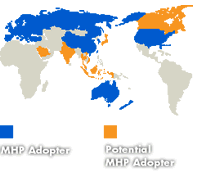 Across Europe, interactive services using the DVB Multimedia Home Platform (MHP) standard have been launched on cable, satellite and terrestrial platforms. While not formally mandated by the European Commission, MHP has been embraced as an open and interoperable standard that can be actively encouraged and promoted. Already, several countries have launched MHP-based interactive services on the terrestrial platform.
Across Europe, interactive services using the DVB Multimedia Home Platform (MHP) standard have been launched on cable, satellite and terrestrial platforms. While not formally mandated by the European Commission, MHP has been embraced as an open and interoperable standard that can be actively encouraged and promoted. Already, several countries have launched MHP-based interactive services on the terrestrial platform.  In Austria, a DTT trial with MHP-based interactive services provided 150 households in Graz with access to an interactive television service called !TV4 using the telephone connection for the return channel. Using their television remote control, viewers could retrieve information services and vote. Given the success of the trial, it is likely that MHP-based interactive services will be launched alongside DTT services.
In Austria, a DTT trial with MHP-based interactive services provided 150 households in Graz with access to an interactive television service called !TV4 using the telephone connection for the return channel. Using their television remote control, viewers could retrieve information services and vote. Given the success of the trial, it is likely that MHP-based interactive services will be launched alongside DTT services.  Of course MHP is not the only interactive television service system in the market. Proprietary systems such as MediaHighway and OpenTV have been installed in a large number of set-top boxes, often for cable and satellite platforms. In the United Kingdom, the MHEG standard is widely used on the terrestrial platform. As a result of the various products and services in the market, the DVB Project has been working on the development of the Portable Content Format (PCF) to deliver a wide range of interactive television services to multiple platforms with a minimum of re-authoring. It has significant interest for operators who wish to migrate towards MHP by allowing them to manage simultaneously a mixed population of devices.
Of course MHP is not the only interactive television service system in the market. Proprietary systems such as MediaHighway and OpenTV have been installed in a large number of set-top boxes, often for cable and satellite platforms. In the United Kingdom, the MHEG standard is widely used on the terrestrial platform. As a result of the various products and services in the market, the DVB Project has been working on the development of the Portable Content Format (PCF) to deliver a wide range of interactive television services to multiple platforms with a minimum of re-authoring. It has significant interest for operators who wish to migrate towards MHP by allowing them to manage simultaneously a mixed population of devices. 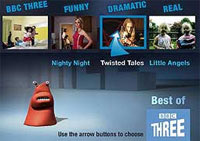 BBC Three viewers will be able to schedule their own Sunday night viewing in a pioneering multi-screen application trial starting on 1 May 2005.
BBC Three viewers will be able to schedule their own Sunday night viewing in a pioneering multi-screen application trial starting on 1 May 2005.  Emma Somerville, the BBC’s Head of Interactive Programming, added: “Interactive TV can really help our audiences engage with the BBC’s TV channels.”
Emma Somerville, the BBC’s Head of Interactive Programming, added: “Interactive TV can really help our audiences engage with the BBC’s TV channels.”  Old school TV listings magazine The Radio Times, has announced a partnership with Gemstar, the Murdoch-owned electronic programme guide (EPG).
Old school TV listings magazine The Radio Times, has announced a partnership with Gemstar, the Murdoch-owned electronic programme guide (EPG).  This partnership kicks the Radio Times firmly into the new digital age of television, with the company selling advertising on Guide Plus+ and boosting awareness of the EPG by plugging it relentlessly in its print magazine.
This partnership kicks the Radio Times firmly into the new digital age of television, with the company selling advertising on Guide Plus+ and boosting awareness of the EPG by plugging it relentlessly in its print magazine.  Gill Hudson, editor of the Radio Times, declared: “There is now no format not covered by Radio Times – you can access RT via mobile, your PDA, online, and now the Guide Plus+ EPG.”
Gill Hudson, editor of the Radio Times, declared: “There is now no format not covered by Radio Times – you can access RT via mobile, your PDA, online, and now the Guide Plus+ EPG.”  The Comcast deal means that TiVo will have to adapt its software to work on Comcast’s existing DVR platform. This will enable TiVo to blast out the advertising it sells as interactive video clips in their onscreen menu to Comcast subscribers.
The Comcast deal means that TiVo will have to adapt its software to work on Comcast’s existing DVR platform. This will enable TiVo to blast out the advertising it sells as interactive video clips in their onscreen menu to Comcast subscribers. 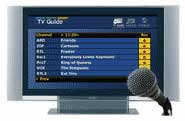 Punching endless buttons and shouting at your video recorder could become a thing of the past thanks to Opera Software’s new voice-enabled Electronic Program Guide (EPG) for home media.
Punching endless buttons and shouting at your video recorder could become a thing of the past thanks to Opera Software’s new voice-enabled Electronic Program Guide (EPG) for home media. 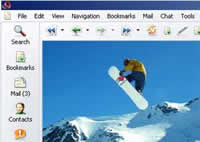 Opera will also be rolling out a new voice-enabled edition of the Opera browser for PCs.
Opera will also be rolling out a new voice-enabled edition of the Opera browser for PCs. 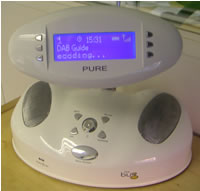 PURE Digital announced today that it’s offering support for an Electronic Programme Guide (EPG) for the Bug DAB digital radio.
PURE Digital announced today that it’s offering support for an Electronic Programme Guide (EPG) for the Bug DAB digital radio.